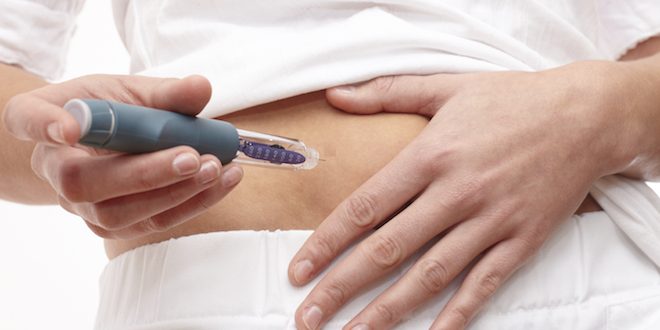When told they need to move to insulin injections, many people fear the pain associated with needles and often ask 'Do insulin injections hurt?'. Yet the reality is that when insulin therapy is started, most people, including healthcare professionals, are surprised to find how little pain there is when giving injections. In fact, insulin needles are commonly reported to hurt less than the fingertip lancing required for blood glucose checking.
Today’s needles are shorter and narrower
Needle technology has come a long way in recent years. Today’s needles are smaller and finer than ever before, making injections as painless as possible. Research no longer supports the use of needles longer than 8 mm for most people. Many are able to use needles as short as 4mm. These shorter needles have not impacted the efficacy of insulin and cause less tissue trauma and more accurate delivery to the subcutaneous tissue (rather than the muscle tissue). The subcutaneous tissue is recommended for injection since it provides the most reliable and stable absorption. In addition, needle tips have improved in design which require less penetration force. The combination of shorter needles, thinner needles and improved needle tips have all contributed to better injection comfort.
Tips for more comfortable injections
The following are recommendations to make injecting insulin more tolerable:
- Before each injection, the site should be inspected and gently massaged. Hair roots, moles, scars or infected areas should be avoided. Avoid injecting through clothing so the site can be seen.
- Rotate sites as advised by the diabetes healthcare team.
- A new needle should be used each time.
- Use room temperature insulin.
- If using alcohol, inject once the alcohol has fully dried
- Insert the needle through the skin using a quick, smooth movement without excess force.
- Inject the medication slowly and evenly. Ensure that the pen knob has been depressed fully.
- In some cases, the insulin dose should be split into 2 injections at 2 different sites, since discomfort at the injection site may decrease when doses less than 50 units are used (for insulins with 100 units/mL concentration).
- Higher-concentration basal and mealtime insulins are now available in Canada, allowing for higher doses to be administered in smaller volumes than was previously the case.
You should follow the specific recommendations given by your healthcare professional. For example, injections in different parts of the body can affect blood glucose levels.
Different types of insulin therapy
People with diabetes have a choice of options for administering insulin:
- Insulin syringes – combined with smaller and finer needles
- Insulin pens – these combine a fine needle and insulin cartridge in one unit making it easier to use than a syringe and are the most common method of administration in Canada
- Insulin pumps – these don’t use needles and deliver insulin continuously into the skin, day and night
Talk to your diabetes healthcare team together about the type and pattern of injections that will work best for you. Also discuss how you can identify good injection technique and how to examine the injection site for any problems that may affect the action of the insulin.
 Diabetes Care Community Learn, connect and care
Diabetes Care Community Learn, connect and care





